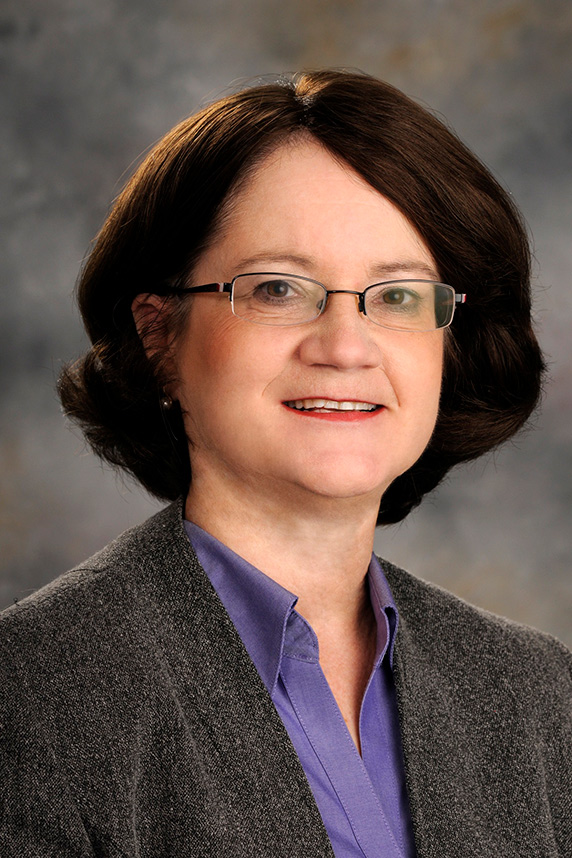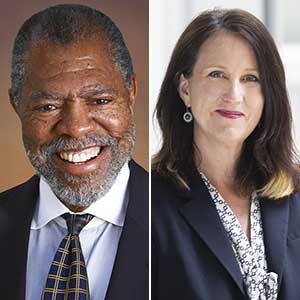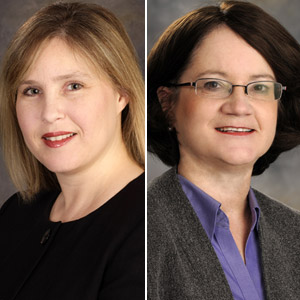NIEHS marked Autism Awareness Month with a mini-symposium April 12 showcasing NIEHS-funded research, as well as a guest lecture April 28 that presented a new hypothesis about how microbes in the gut are linked to the disorder.
Autism, also known as autism spectrum disorder (ASD), is a broad range of conditions affecting the way people communicate, behave, or interact with others. Once considered rare, the Centers for Disease Control and Prevention now estimates that autism affects about 1 in 54 children in the United States.
 April is Autism Awareness Month in the United States. (Photo courtesy of SerrNovik / iStock.com)
April is Autism Awareness Month in the United States. (Photo courtesy of SerrNovik / iStock.com)“There is a strong genetic contribution to autism, but we know a lot less about the nongenetic or environmental factors that might be at play,” said Cindy Lawler, Ph.D., head of the NIEHS Genes, Environment, and Health Branch.
During the mini-symposium(https://tools.niehs.nih.gov/conference/dert_autism_2021/), six early-stage researchers presented their efforts to study those environmental factors, describing a variety of approaches from epidemiology to laboratory-based studies of biological mechanisms that may be at play.
A challenging field
Environmental factors account for an estimated 40% of autism risk. “This symposium has left me thinking that we have learned a lot about these nongenetic factors, but there’s still a long way to go,” said Katie Eyring, Ph.D., a postdoc in the lab of Daniel Geschwind, M.D., Ph.D., at the University of California, Los Angeles (UCLA). Eyring noted the challenges that she and other researchers face in evaluating these factors in a systematic way.
One challenge comes from selecting clear parameters for the specific exposures a researcher plans to study. “Even in this one meeting we’ve heard about factors ranging from maternal stress, metabolic features, the immune system, things that you’re breathing, things that are in your house,” said Eyring. “It’s a very broad space to try and explore.”

Lawler expects that the evidence linking some environmental risk factors to autism will continue to build, thanks to the presenters’ research. (Photo courtesy of NIEHS)
Models and methods
Another challenge is deciding on a model system to investigate how these environmental exposures may affect human neurodevelopment.
Sagi Gillera, a graduate student in the North Carolina State University lab of Heather Patisaul, Ph.D., studies how perinatal exposure to flame retardants affects social behavior in monogamous prairie voles. “They’re like Romeo and Juliet or Jake from Twilight, depending on which age demographic you are,” she said. Other presenters described experiments using mice, zebrafish, and human cells.
Finally, researchers must pick an assay to capture how exposing these models to specific environmental factors contributes to autism risk. For example, Yijie Geng, Ph.D., a postdoc in the lab of Randall Peterson, Ph.D., the University of Utah, developed a new assay to screen hundreds of chemicals for behavioral and molecular effects in zebrafish. Of 1,200 chemicals, he found four that induced social deficits and disrupted known autism genes.
Expanded scope
 Lawler is the program officer for the Early Autism Risk Longitudinal Investigation, or EARLI study, the Childhood Autism Risk from Genes and Environment, or CHARGE study; and the Markers of Autism Risk in Babies-Learning Early Signs, or MARBLES. (Photo courtesy of Steve McCaw / NIEHS)
Lawler is the program officer for the Early Autism Risk Longitudinal Investigation, or EARLI study, the Childhood Autism Risk from Genes and Environment, or CHARGE study; and the Markers of Autism Risk in Babies-Learning Early Signs, or MARBLES. (Photo courtesy of Steve McCaw / NIEHS)The breadth and depth of the talks demonstrated the expanded scope of autism research that NIEHS has funded in recent years. “The institute has typically supported more observational studies, so I think it is pretty remarkable that for this particular mini-symposium we see a lot of innovative basic research in model systems,” said Lawler.
By disentangling the genetic and environmental factors that interact to give rise to autism, this basic research could inform new ways to prevent or treat the disorder. For example, the efforts of Caroline Smith, Ph.D., a postdoc in the lab of Stacy Bilbo, Ph.D., at Duke University, could have clinical implications. She studies the relationship between traffic-related air pollution, the gut microbiome, and social development. “There are promising clinical trials of microbiota transplants that suggest there may be long-lasting improvements in both gastrointestinal function and autism,” she said.
The gut-brain connection
On April 28, Diego Bohorquez, Ph.D., also from Duke University, described how the gut-brain connection could explain some of the behaviors and gastrointestinal symptoms that are often found in autism. His lab studies the neural circuits that transform signals from food and bacteria in the gut into electrical inputs that affect brain function.
Bohorquez is a recipient of a 2019 National Institutes of Health Director’s New Innovator Award, which he is using to explore the potential for treating autism and other brain disorders with drugs that act on the gut.
Citations:
Modabbernia A, Velthorst E, Reichenberg A. 2017. Environmental risk factors for autism: an evidence-based review of systematic reviews and meta-analyses. Mol Autism 8:13.
Gaugler T, Klei L, Sanders SJ, Bodea CA, Goldberg AP, Lee AB, Mahajan M, Manaa D, Pawitan Y, Reichert J, Ripke S, Sandin S, Sklar P, Svantesson O, Reichenberg A, Hultman CM, Devlin B, Roeder K, Buxbaum JD. 2014. Most genetic risk for autism resides with common variation. Nat Genet 46(8):881–885.
(Marla Broadfoot, Ph.D., is a contract writer for the NIEHS Office of Communications and Public Liaison.)









